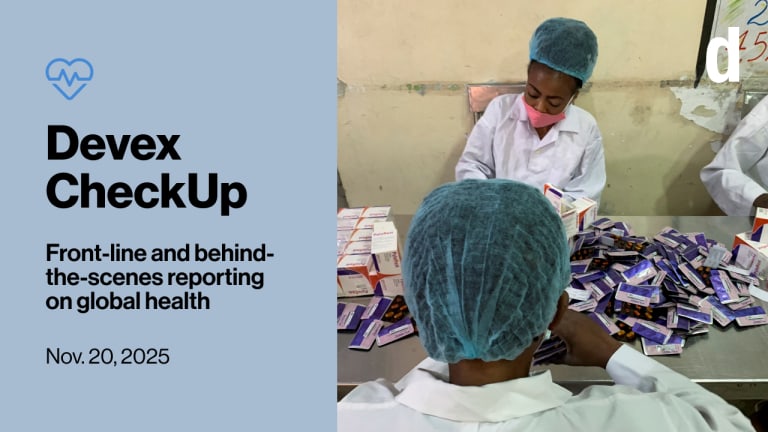
Six months after its launch, the U.S. government’s Action Plan for Children in Adversity lacks “teeth,” child development and health experts told a Senate appropriations subcommittee on Tuesday.
But whether or not the U.S. government heeds the calls by some advocates to kickstart a PEPFAR-style movement in countries that aren’t prioritized by the flagship HIV and AIDS program, the action plan is likely to impact aid procurement, particularly application requests for child health and safety programs, as the U.S. Agency for International Development has committed to align its priorities with the plan’s strategy, beginning in a list of “focus countries” that will be announced in June, according to an agency official.
Neil Boothby, one of the action plan’s architects, told Devex that U.S. aid partners should prepare for the upcoming procurement changes: “I would encourage operational agencies to become familiar with the action plan.”
“It is important for agencies to start looking at how they can align and reorient what they’re doing, and it’s very, very important that we all work together to figure out how we’re actually going to measure achievement of results. How are we going to look at reductions of children outside of family care, and reductions of violence? We’ve got to get much more attention and serious about the measurement piece,” he said.
Boothby explained that “things will not change overnight, but if you start thinking over the next three to four years, you will see, in requests for applications for example, and other funding mechanisms, greater alignment with achieving results in these areas,” and hoped that at least Congress will change its apparent lack of attention to the issues facing children in adversity.
PEPFAR-style mechanism
Mary Landrieu, who organized the hearing, seemed to suggest that the action plan could draw on the $330 million the U.S. President’s Emergency Plan for AIDS Relief, the Bush administration’s flagship HIV and AIDS program, currently sets aside for funding children, and especially orphans. This amount makes up 10 percent of the PEPFAR budget, but would only flow to a select number of countries PEPFAR operates in.
That’s why Boothby and others are suggesting the creation of a similar program to fill in the gaps. The idea, Boothby clarified, is not to shift PEPFAR funding to another program, but to create a similarly organized structure to address children’s needs — including needs related to HIV and AIDS — in countries PEPFAR currently doesn’t prioritize.
PEPFAR has “significant resources in this area,” Boothby said. “They’re limited to HIV and AIDS preference countries. So what we need in a certain sense is, whether or not we call it a PEPFAR for children in non-HIV and AIDS countries, but the equivalent.”
The plan’s architects argue that focusing on three central priorities under a coordinated approach can reduce by 40 percent the number of children who do not reach their “full developmental potential” due to adverse conditions, and reduce by 75 percent the number of children living “outside of family care,” in orphanages or other institutions.
‘Slim’ budget
What is less clear, however, is whether the program’s “slim” $13 million budget can leverage sufficient funding for the goals it has set, which will require commitments to childhood development strategies that the panel said are currently not prioritized in U.S. government efforts abroad.
Landrieu highlighted the need to place orphans in permanent family care, and panelists agreed this should be a priority, as removing children from orphanages — a crucial element of aiding in their early development — has so far not been a focus of government-led international intervention, and as a result the action plan will face serious obstacles in accomplishing this goal.
“In my role as special adviser I’m supposed to point out gaps, including budget gaps,” Boothby noted. “And we’ve got a gap.”
Dim prospects for more funds
The prospects for any significant additional funding, other than what can be reallocated from existing childhood-development related programs, seemed dim on Tuesday, when Landrieu was the only member of the subcommittee to attend the full hearing.
Boothby said it’s “disappointing” that about 30 congressmen that signed a letter in support of the action plan did not show up, but also stressed that the fact the subcommittee hearing actually took place was “good news.”
Those 30 supporters have been invited to attend a “members-only” briefing on the status of the program on Wednesday in the House.
“This is going to be a heated conversation, and there’s lots of support for other issues, so we’ll see how we do,” Boothby said. “But at least we’re in the rough now. We’re in the battle.”
Read more development aid news online, and subscribe to The Development Newswire to receive top international development headlines from the world’s leading donors, news sources and opinion leaders — emailed to you FREE every business day.








